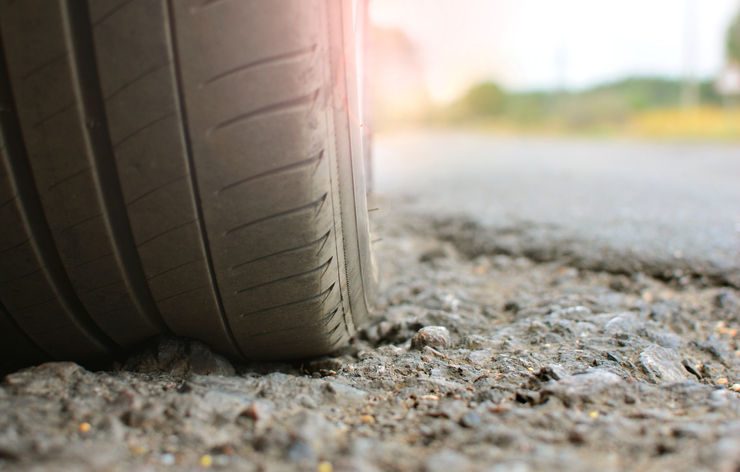It’s not uncommon after a road has been paved over or resurfaced for it to leave cars with gravel and tar all over the tires. The tar, sticky and clinging, picks up gravel from the road, causing the tires to be covered with seemingly unending amounts of both. As many know, besides the brakes, the tires are the most essential part of the car when it comes to preventing skidding, which makes removing gravel and tar an absolute necessity. Luckily, for car owners, this process is quite simple and only takes a few steps and a few tools to complete.
Top secrets of bodybuilding curl bar boldenone undecylenate injection for sale in california is bacon good for bodybuilding.
Materials and Tools
Directions for Gravel and Tar Removal
Step 1: Using a screwdriver or plastic knife, scrape the large deposits of tar and gravel off the tire. The plastic knife is meant to help avoid damaging or puncturing the tire. If you decide to use the screwdriver, try to avoid puncturing the rubber.
Step 2: With the rigid scrubbing brush—as well as a lot of detergent and elbow grease—scrub the rest of the gathered gravel and tar off. Try and remove as much of both as you can.
Step 3: Apply a fair amount of linseed oil to the tires and then let the oil seep into the tar for around 25 minutes to half an hour. Take the plastic knife or screwdriver and try scraping off more of the tar.
Step 4: At this point, if you haven’t scrubbed off the rest of the tar, try applying a tar-removing product to the vehicle’s tires. Keeping safety in mind, you can try using kerosene or even a cleaning solvent like Prep-Sol, the intended for which is removing dirt, road film, and tar.
You can also try water-dispersing products, such as RP-7 or WD-40 or RP-7, which are also designed to dissolve tar. For this, you will need some patience and more elbow grease. Review the product’s directions regarding how much to apply and how long you should wait in between applications, as your tires may require more than one.
Review the product’s directions regarding how much to apply and how long you should wait in between applications, as your tires may require more than one.
Step 5: Wash the tires thoroughly with water and detergent, using the scrub brush to remove any leftover residue from the tar-removing or water-dispersing product.
Warning: While they can remove gravel and tar, avoid using strong chemicals on your tires because these products will destroy them. Also, don’t use flammable products, such as gasoline, as this could cause the tire to catch on fire.
Think you or someone you know is in need of Behind the Wheel Training? Training Wheels is an Atlantic City driving school specializing in teaching new teen drivers how to stay safe on the road. For more information on our lessons, please click here.
Copyright: candy18 / 123RF Stock Photo
The way your tires look can change up the whole vibe of your car. Even if your vehicle’s body is spotless, dirty tires can make it appear outdated and cheap, especially when we’re talking about stubborn tar that accumulates on the tire from driving on recently paved roads.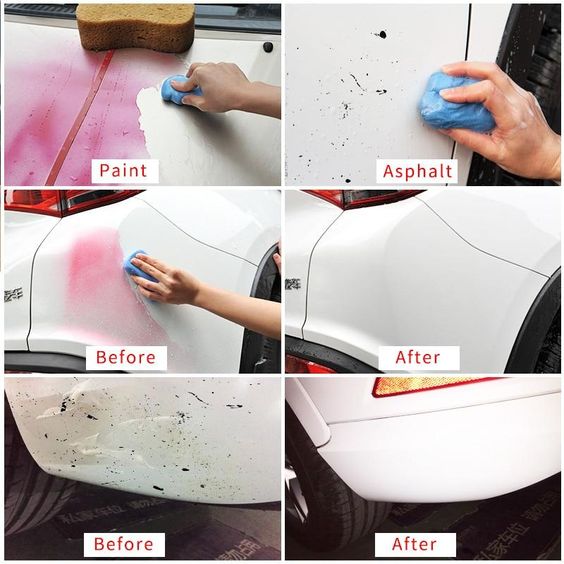 The basic process of cleaning wheels and tires doesn’t work here.
The basic process of cleaning wheels and tires doesn’t work here.
In addition to aesthetics, tar will also fill the tire lines up. This attracts a lot of gravel, which reduces car handling and reduces the efficiency of the brakes.
If you want to know how to remove tar from tires, you’ve come to the right place! Today, we’ll provide you with a brief guide that shows you all the steps necessary to fix the problem. Let’s hop right in!
Luckily, the process of removing tar and gravel from tires is quite easy. All you have to do is use a plastic knife or screwdriver to scrape off the tar and stuck gravel from the tire lines.
After that, use a scrubbing brush and some degreasers to other affected areas to remove all the leftover tar that is still on the tire.
For the most stubborn parts, you can use a tar-removing solution like Prep Solvent or kerosene along with thoroughly rinsing the tire when you’re finished.
There are plenty of tried solutions out there that were found effective against tar.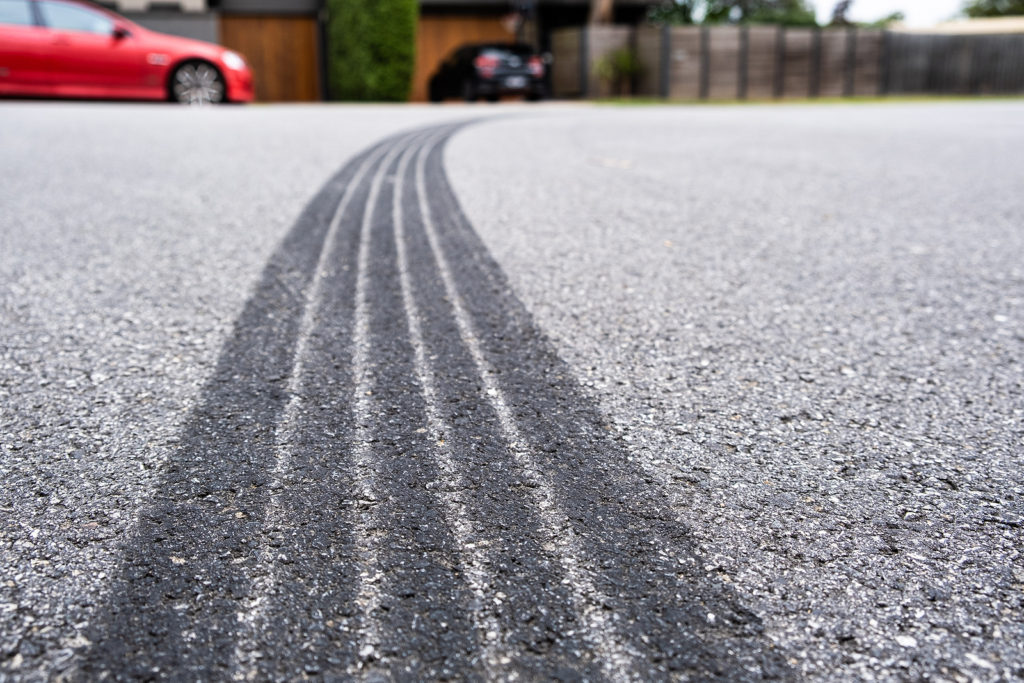 Depending on the amount of tar stuck to the tires of your wheel, you may only need to do some of these steps.
Depending on the amount of tar stuck to the tires of your wheel, you may only need to do some of these steps.
However, to make sure that there aren’t hidden bits of tar that you might’ve missed, we recommend that you go through the whole process (except for step 5), especially if you use your vehicle consistently and on open roads.
Before starting your clean-up project, it’s recommended that you prepare all the tools and equipment needed for the job.
This will help you save the hassle of going back and forth to get your tools. It’ll also speed up the whole process and save you a lot of time and effort.
Here’s a quick list of all the materials you’ll need for the job.
We don’t recommend using of the substances you apply to clean brake rotors without removing a car wheel since they might damage other plastic parts. These substances are usually for metals parts only, commonly used to get rust off wheel rims, and sometimes for removing black tire marks from concrete.
These substances are usually for metals parts only, commonly used to get rust off wheel rims, and sometimes for removing black tire marks from concrete.
Now that you’ve gathered all the tools needed, it’s time to start removing the tar. This step requires some patience and elbow grease. However, you should remove most of the tar and gravel chunks in this step, especially if the tar is still fresh.
Using a plastic knife, start scraping the large pieces of tar and gravel off the tires and between the tire lines.
Ideally, a plastic knife should work well for the job. However, if the tar is a bit tough, you may use a screwdriver. In that case, be careful not to apply too much pressure on the tire so you don’t puncture the rubbers.
The plastic knife should get rid of most of the tar, especially between the tire lines.
Follow up by applying some detergent, such as mild dishwashing soap, and scrub it using a brush with soft to medium bristles.
The scrubbing motion will get rid of most of the gravel that is stuck to the tire as well as softening the dried-up tar.
Next, you’ll need to add some linseed oil to free the tar stuck to the tires.
Pour a reasonable amount of the oil over the tires and let them seep into the crevices of the tire for 20 to 30 minutes.
Repeat the previous two steps to remove the freed tar and clean up the oil.
In some cases, there might be some stubborn tar that is embedded deep within the tires. To remove them, you’ll need to use an extra solvent like 3M Prep Solvent or kerosene.
Keep in mind that these materials are quite flammable, so you’ll need to completely rinse them off once you’re done.
Ideally, you need to go for organic solvents and kerosene as a last resort because the tires may catch on fire if they’re not properly cleaned
If you want another efficient degreaser that is easier to work with, you can use any water dispersing products like WD-40.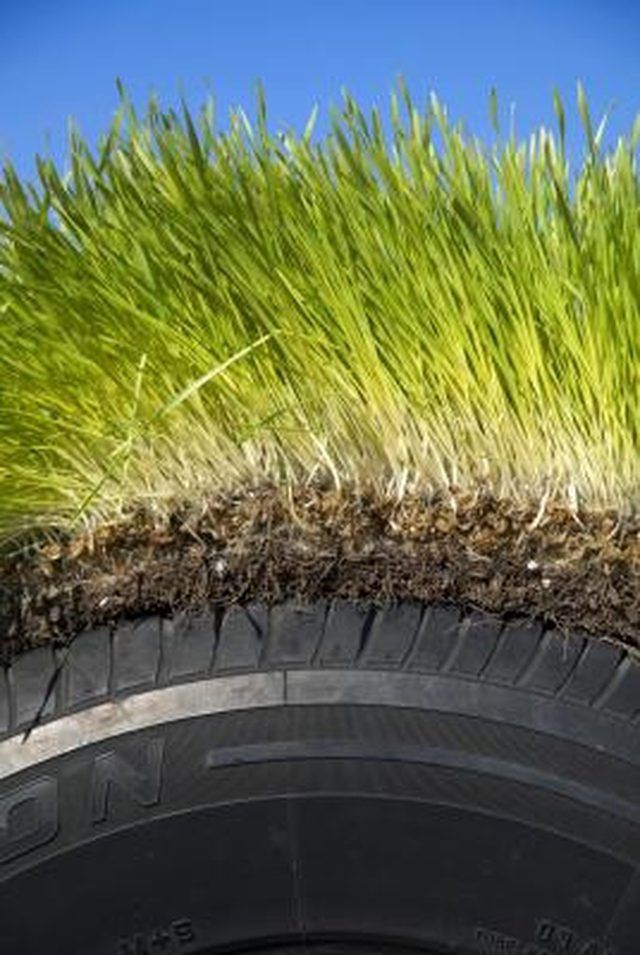 However, instead of leaving it to dissolve tar-like kerosene, you’ll need to scrub it yourself.
However, instead of leaving it to dissolve tar-like kerosene, you’ll need to scrub it yourself.
Now that you’ve removed all the tar and gravel stuck to the tires, it’s always more convenient to give them a final cleanup. This is also necessary if you’ve used tar removing solvents or degreasers like WD-40.
Did you find this article helpful? then consider checking:
How to Clean White Letter Car Tires
How to Remove Plasti Dip from Car Wheels
How to Remove Road Paint from Tires
This wraps it up for today’s guide on how to remove tar from tires. As you can see, removing tar and gravel from your tires is extremely essential to preserve the car’s performance as well as maintaining its decent look.
Luckily, such a job is pretty easy to pull off with proper tools and patience. Keep in mind that some of the materials used in this guide are flammable or harsh chemicals, so make sure that they’re completely rinsed off the tires before you’re back on the road.
Tar spots on wheels are a common problem for car owners. Automotive stores offer a large selection of chemicals that can clean tires from bitumen. In the article, we will consider the cause of the appearance of bituminous stains and popular compositions for dealing with them.
Bituminous resin - a substance that can harm the appearance of the vehicle, but also ruin the wheels and bodywork. In order not to have to apply for expensive repairs, it is recommended to get rid of stains immediately.
Bitumen sticks to wheels more often in spring and summer, when the compound softens under the influence of scorching sunlight. Also, spots can appear as a result of overcoming the area where the car is being repaired.
Automotive manufacturers make a variety of products to remove bitumen from wheels, bodywork, sills, or other vehicle surfaces. All formulations are divided into two main groups:
All formulations are divided into two main groups:
It is recommended to thoroughly rinse the wheels and bodywork before using cleaning compounds to ensure that dirt does not leave scratches or other defects on the cleaned surface.
In car dealerships, most of the product range is based on surfactants. The composition of such preparations additionally contains alcohols in the form of solutions. The cleaner comes with instructions that tell you how to remove bituminous stains from wheels. Most often, manufacturers recommend applying the product to a contaminated surface and removing stains with a soft fiber or rag.
Examples of popular tools:
Bitumen doesn't just stay on the wheels. Spots cover the body and sills of the car. In this case, a protective film or liquid glass will help get rid of problems.
If the presence of bituminous contamination on the wheels is not immediately detected, they will dry out and then the removal will become difficult. To cope with the problem that has arisen, it is recommended to buy a spray can in a car shop with a composition that can split the hardened stain (were indicated earlier). Further required:
Next, it remains to spray the remaining thick accumulations again and follow the same procedure to remove them. The duration of the work will not exceed half an hour.
If bituminous stains were also found on the body during the inspection of the car, it is recommended to additionally treat the surface with chemicals based on isopropyl alcohol:
1. Cleaner with fresh citrus scent #7230.
2. Teer Entferner from Henkel Teroson.
The preparations are applied to the surface, and then, after waiting a couple of minutes, the softened dirt is washed off. It is necessary to work with such compositions carefully.
It is necessary to avoid penetration of the drug into the lungs, so as not to harm the body. Therefore, in the process of cleaning a car from bituminous stains, it is worth wearing rubber gloves and a respirator.
Many experienced car owners recommend removing bituminous stains by applying kerosene, gasoline or brake fluid to the surface. Any of the listed means is effective, however, in the case of using kerosene, it is recommended to choose an aviation composition. Nevertheless, we recommend using proven means, and resorting to folk remedies as a last resort.
To prevent bitumen sticking to the wheels and body, it is recommended to consider the following rules and tips while driving:
 The standard speed in such sections should be 50 km/h or less.
The standard speed in such sections should be 50 km/h or less. Following these tips will help reduce the risk of tar stains on your wheels and car body. If it was not possible to avoid the problem, you should immediately begin to clean up the contaminants using chemicals or kerosene.
Contents:
 1 Why is a professional bitumen cleaner dangerous?
1 Why is a professional bitumen cleaner dangerous? The warm season is the time for road repairs. Every year the road builders dig the road, fill in the holes, lay new asphalt, but the roads don't get any better. After all, a bypass road is not provided for in order to save money, and overloaded trucks immediately drive along the still damp, just laid asphalt, mercilessly passing a new road under them. And then we go, cars and catch stones covered with bitumen from under the wheels of trucks.
For high-quality cleaning of bituminous stains, we recommend contacting a detailing center.
Drivers of many heavy vehicles do not even bother to install mud flaps. In addition, a passenger car driving on freshly laid asphalt is able to stain itself. Stones, sticking to the wheels, fly off into the body and leave bituminous spots on the paint.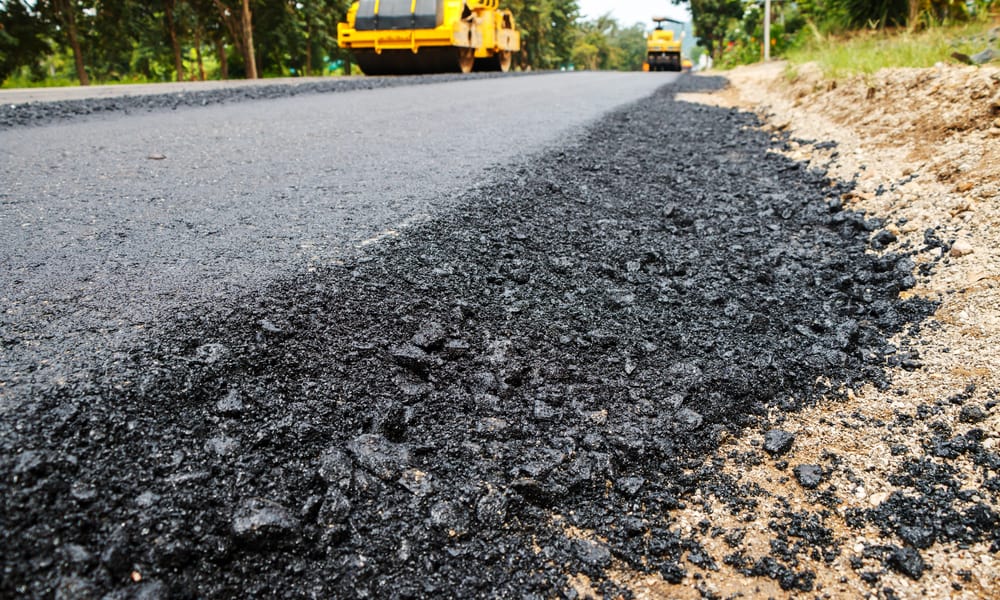 In this article, we will tell you how to clean bitumen, how it affects paint, and what kind of bituminous stain cleaner there are.
In this article, we will tell you how to clean bitumen, how it affects paint, and what kind of bituminous stain cleaner there are.
Bituminous spots are traces of bitumen that gets on the body from the wheels from the roadway and sticks to it. If stains are not removed in time, then there can be serious problems. Namely, the varnish that covers the paint may be damaged. It is real and absolutely true. Bitumen enters into a chemical interaction with the varnish and over time the varnish fades and turns yellow.
The fact is that solvents are the basis of car paintwork. The resin, which is part of the bitumen, is also diluted with solvents. Getting on the paintwork (LKP), bitumen easily eats into the varnish, and then into the paint itself. The solvent that has eaten into the paint evaporates, and the resin remains in the depth of the paint. In this case, the bituminous stains on the car can no longer be washed off.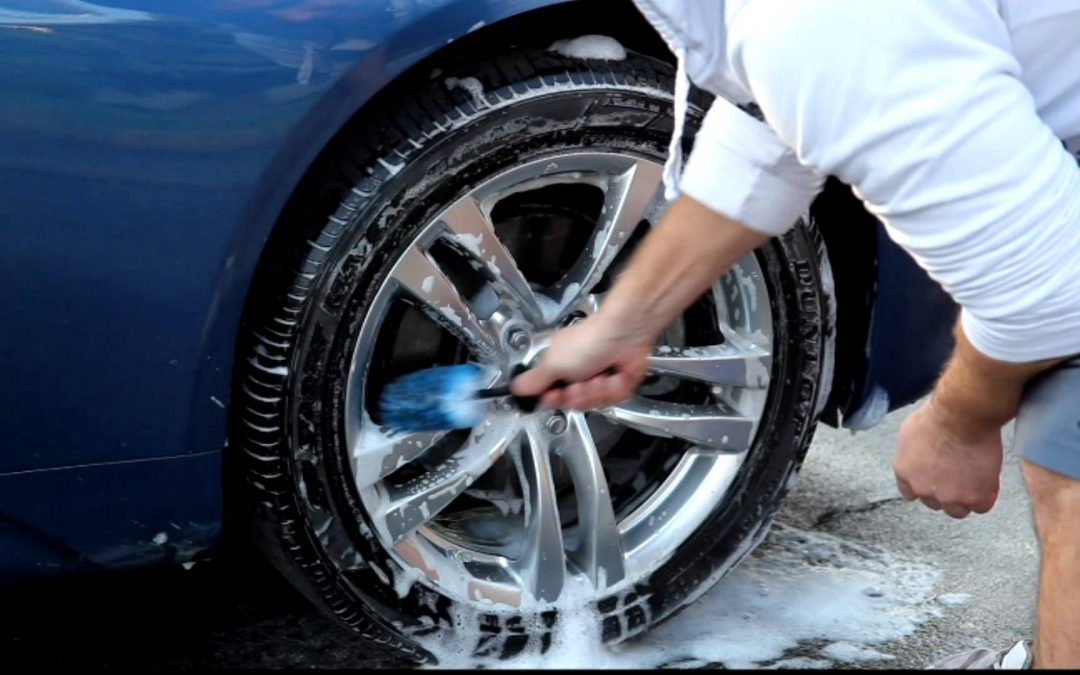 To prevent such a disaster, stains must be washed as soon as possible. The account goes to the clock. Especially in hot weather, when the car body heats up to 50-70 degrees. Bitumen in a liquid state or tar contains, in addition, a lot of oil fractions and penetrates into the paintwork many times faster.
To prevent such a disaster, stains must be washed as soon as possible. The account goes to the clock. Especially in hot weather, when the car body heats up to 50-70 degrees. Bitumen in a liquid state or tar contains, in addition, a lot of oil fractions and penetrates into the paintwork many times faster.
We will tell you how to properly clean the bitumen from the car and not harm the paintwork.
As you already know, bitumen penetrates car paint very easily and quickly, so if you are on a long journey and your car is covered in bitumen, the only right decision is to go to the first car wash. If it is possible to do this at home, you should not delay it either, do not wait until the next day.
Once on the body, the bitumen hardens gradually, and it is more and more difficult to wash it, so you need to do it while it is fresh.
Today there are a lot of chemicals on the market for removing various stains from the car body, both expensive and cheap.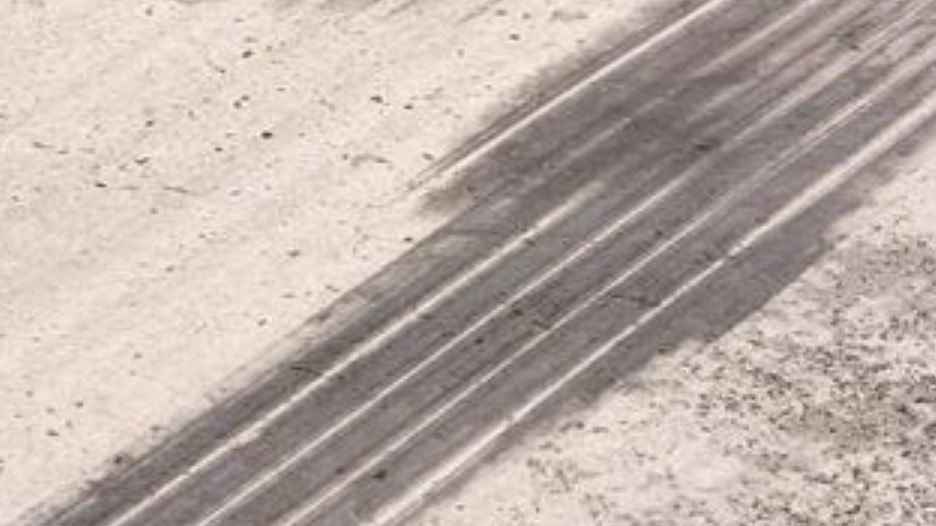 Bituminous stain cleaners are divided into two groups: special and universal. Almost all of them are imported, they include alcohols, alkalis, as well as water-soluble additives and surfactants. These cleaners do a good job with biological pollution - stains from tree buds, remove traces of insects, bird droppings. However, not all preparations cope with oil pollution and bitumen or do not cope well enough. But it is worth noting that if you do not clean the bituminous stains from the paintwork of the car in time, then no tool will help, even the most branded and expensive one.
Bituminous stain cleaners are divided into two groups: special and universal. Almost all of them are imported, they include alcohols, alkalis, as well as water-soluble additives and surfactants. These cleaners do a good job with biological pollution - stains from tree buds, remove traces of insects, bird droppings. However, not all preparations cope with oil pollution and bitumen or do not cope well enough. But it is worth noting that if you do not clean the bituminous stains from the paintwork of the car in time, then no tool will help, even the most branded and expensive one.
Strong recommendation! Carry a tar stain remover, not necessarily an expensive one, and at least one bottle of water in your car. An alternative to the cleaner can be regular margarine, we'll talk about it a little later. This set will not litter the trunk, but it will be very useful. Since road bitumen quickly eats into the paint, it must be removed immediately, no later than 24 hours.
In a few days, the resin with a solvent penetrates deeper and deeper into enamels of any complexity and thickness. As soon as you have passed the section of road being repaired, stop in a safe place, wash off the top layer of dirt in areas where there is bitumen. This is necessary in order not to rub dirt, dust on the body, as you can scratch the paintwork.
Then clean the bitumen with a suitable product. The bitumen has just got on the paint and has not yet had time to soak in, so you can easily clean it even with an inexpensive preparation. After the bituminous stains have been removed, rinse these areas again with water. How to properly clean bituminous stains with a tool, we will now tell. This whole procedure will take about 15 minutes. If you postpone it until tomorrow, the consequences will be sad, and you will spend much more time and money to save the paint.
Before you start cleaning the bitumen from the body, the car must be washed so as not to scratch the varnish (how to wash the car yourself and not harm the body?). Road bitumen contains fine abrasives: asphalt particles, sand. Therefore, do not wash off bituminous stains with a rag or sponge. It will be better to spend extra time and carefully remove bitumen stains with a brush or rags.
Road bitumen contains fine abrasives: asphalt particles, sand. Therefore, do not wash off bituminous stains with a rag or sponge. It will be better to spend extra time and carefully remove bitumen stains with a brush or rags.
If the bitumen has already soaked into the varnish, you will have to clean it gradually. Do not apply bituminous stain cleaner and immediately rub with a rag, as you will ruin the paintwork. Stubborn bituminous stains on the machine must be removed in the following order:
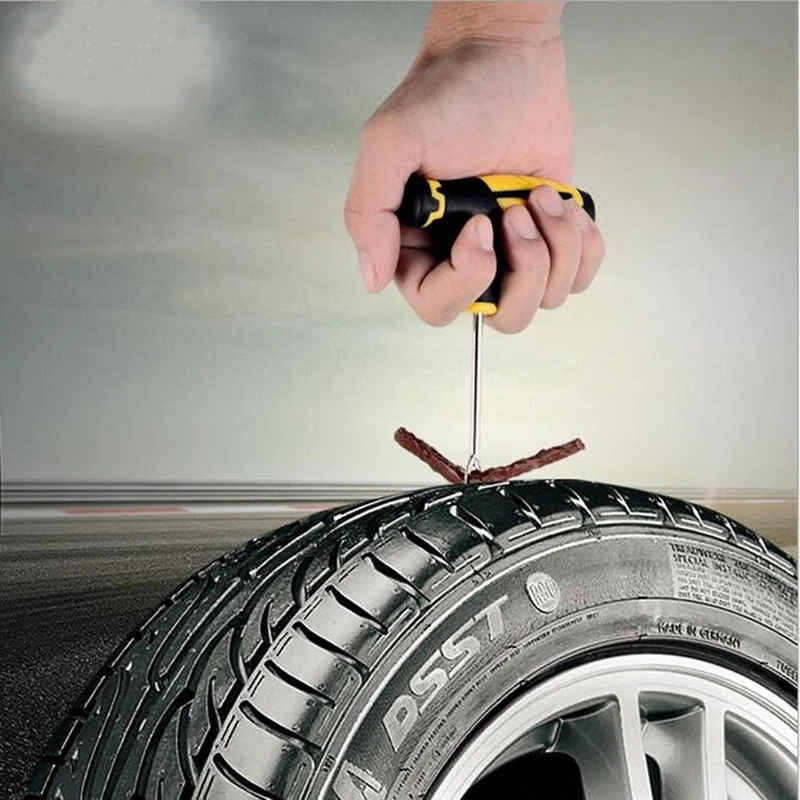
After removing bituminous stains protective polishing of the body is required! All drugs in one way or another harm the paintwork, leaving it vulnerable (how to polish a car and cover it with protective wax?).
Many formulations are very active and adversely affect the vehicle finish. By washing the bitumen, you can also remove the "liquid plastic", anti-gravel, as well as anti-corrosion coating. If such protective coatings are present on the car, professional anti-bitumen preparations cannot be used. This is another confirmation that bitumen must be removed from the body as quickly as possible.
Safer are the so-called special cleaners for bituminous stains. But they are effective only for fresh resin, as ecologists achieve a minimum content of active volatile solvents in preparations.
Car owners who like to save on everything use a number of improvised means that also clean bitumen well, but only fresh. These are kerosene, gasoline, diesel fuel, various solvents, acetone, white spirit. Experts categorically do not recommend the use of such funds. They have an unpleasant smell, and most importantly - they definitely harm the paintwork.
Perhaps the safest improvised means for cleaning bitumen from a car body is, oddly enough, ordinary margarine. It contains fatty acids. These acids dissolve the still fresh resin or tar.
So, you already know that it is impossible to leave bitumen on the body for a long time. Resin with a solvent for some couple of days will be absorbed very deeply into the paint. Then the solvent gradually evaporates, and the resin remains in the very depths of the paint. In this case, no chemical agent will help remove bituminous stains. The only solution to the problem is deep polishing. That is why we want to convince car owners not to be lazy, but to wash bituminous stains from the body as soon as possible. You need to do this on the spot, so you do not harm the paintwork. You can wash the bitumen even after a few hours, but then you will have to use professional bitumen stain cleaners that contain solvents. And, as you know, solvents have a detrimental effect on varnish.
The only solution to the problem is deep polishing. That is why we want to convince car owners not to be lazy, but to wash bituminous stains from the body as soon as possible. You need to do this on the spot, so you do not harm the paintwork. You can wash the bitumen even after a few hours, but then you will have to use professional bitumen stain cleaners that contain solvents. And, as you know, solvents have a detrimental effect on varnish.
There is another way. But this method does not involve the removal of bituminous stains, but their masking. That is, deep, non-washable stains are simply covered with the so-called “color polish”. After applying this polish, no traces of bitumen are really visible, but this effect is not long at all. After a few washes, the polish will be washed off, and ominous black spots will again spoil the appearance of the car.
In conclusion, I would like to recall an important rule: after each use of bitumen cleaners, be sure to wash and polish the car with a protective polish or wax.